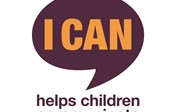For support with children or young people with complex communication and interaction (CCI needs) needs within a early years or school speak with the SENDCO about what support is available. Within Kirklees support is available from:
- the Early Years SEN team for children aged 0-5 (EYSEND team) and
- Kirklees Complex Communication and Interaction outreach team (CCI team) for children and young people over 5.
The EYSEND team offers inclusion provide support and advice to all early years settings (private, voluntary, independent and maintained) around young children with complex needs including social communication difficulties.
Portage provide home-based specialist teaching support to very young children with complex needs including those with social communication needs (where not yet attending an early years setting).
The CCI team meet the special educational needs of children and young people in schools with social communication difficulties including autism. This covers all children and young people with social communication needs.
More information about these outreach services can be found on the EYSEND page or the outreach services page.
Educational Psychology Service (EP service)
Educational Psychology are part of the Kirklees Council Learning and Early Support Service and work with parents, schools and other agencies to support children and young people age 0-25. They help school staff, parents and carers to find solutions to improve the learning outcomes of children and young people and support children and young people’s social and emotional development and wellbeing. More information can be found on the EP Local Offer page.

